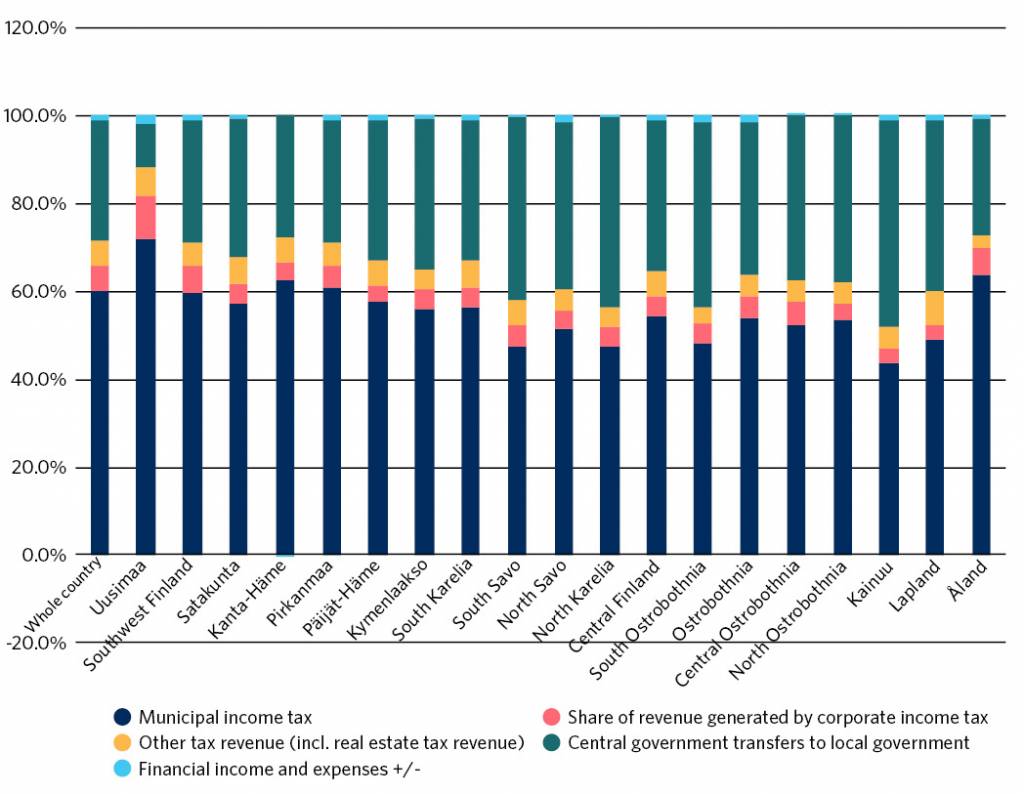The coronavirus is spreading in the economy even faster than among people. While the fight against the coronavirus is increasing municipalities’ social and health care costs, their tax revenue is falling. The Association of Finnish Municipalities estimates that local government finances will weaken by at least EUR 1.5 billion in 2020. The state announced that it will support local government finances immediately by more than EUR 500 million. In addition, the third supplementary budget to be adopted in May will provide at least EUR 1 billion of further support. This article is part of a series of blog posts dealing with the economic impacts of the coronavirus.
The sharp deterioration in companies’ profitability and the dramatic increase in the number of layoffs will be reflected in municipalities’ tax revenue in April, i.e. with a month’s delay. The decline in employment and in the profitability of business will hit particularly hard the economy of municipalities where the service sector has a major role.
The crisis is also expected to leave a big dent in the finances of municipalities where one big industrial employer has a major impact on the corporate income tax revenue and also on the municipal tax. If this employer has to cut back its operations because of a decline in demand or supply shortages in the production chain, the municipality may face problems.
According to the tax revenue forecast (3 April 2020) by the Association of Finnish Municipalities, the Ministry of Finance, and the Finnish Tax Administration, local government tax revenue will fall by 2.8% from the previous year. This means that the municipalities’ revenue will decrease by EUR 645 million. The forecast is based on the assumption that GDP will fall by more than 5% this year and grow by about 1% next year. Layoffs are assumed to affect more than 400,000 people, and the acute crisis is assumed to last three months. If the fall in GDP is 6% or more and the restrictions last longer than three months, the tax revenue will decrease even more than forecast.
Significant differences in the revenue structure of municipalities and regions
There are, nevertheless, big differences in the revenue structure of municipalities and regions and in how important tax revenue is to their finances. The funding of the Uusimaa region depends mainly on municipal and corporate income tax revenue, which will decline during the recession. In Kainuu, South Ostrobothnia, Lapland, North Karelia, and South Savo, less than half of the municipalities’ funding comes from tax revenue. In these regions, central government transfers to local government account for more than 40% of municipals’ revenue. Lapland is an exception to this, but even there central government transfers make up almost 40% of the revenue. The corona crisis will also make the Uusimaa region temporarily dependent of the state.

The state supports local government finances in distress
At the same time that tax revenue decreases, the municipalities’ social and health care expenses increase. The number of people needing hospital or home care is increasing because of the coronavirus. According to a survey sent by the Association of Finnish Municipalities to the 24 largest towns and cities, the social and health care expenses are estimated to increase by at least EUR 400 million. Rescue services and other expenses are expected to increase by about EUR 100 million.
The fall in tax revenue and the rise in expenditure compared with the previous year mean a gap of about EUR 1.35 billion in local government finances. The Government is relieving the plight of municipalities immediately by compensating for the delay in tax revenue by EUR 547 million, which will be recovered in 2021. In the government discussion on spending limits, the Government also declared that it will further support local government finances by at least EUR 1 billion through a supplementary budget to be submitted in May.
The number of municipalities in crisis is expected to grow
Local government finances have been suffering even before the corona crisis. Based on the National Accounts, local government finances showed a deficit of 1,2% relative to GDP in 2019. According to a recent assessment by the Ministry of Finance, the deficit of local government finances will continue to grow somewhat in the years to come.
An important issue to be noted here is the polarization of local government finances. In 2018, the key figures of five municipalities met the criteria set for the launch of an assessment procedure in the case of a municipality in a particularly difficult position (“procedure for municipalities in crisis”). The number of such municipalities is expected to grow in the next few years, and the procedure is also expected to be applied to larger municipalities than before. The finances of a significant number of municipalities have not been on a sustainable basis even under normal circumstances with the present revenue and expenditure level.
As a result of the corona pandemic, many municipalities will end up in an acute crisis. The escape clause of the Stability and Growth Pact was activated on the EU level to allow Member States to exceed the limit set by the rules for the budget deficit. Likewise, the Finnish Government is ready to loosen the criteria for the procedure for municipalities in crisis in order to allow municipalities and joint municipal authorities to increase their deficits this year without fear of ending up in the crisis procedure.
It is wise to ease up the procedure temporarily, but it will nevertheless be necessary to bring local government finances and the funding of municipal activities to a sustainable level in the long term. A comprehensive, well-functioning procedure for municipalities in crisis will continue to be needed even in the future.







